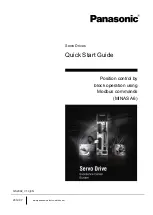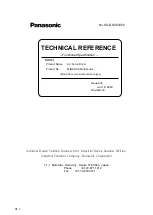
52 Program features
The drive monitors the motor status continuously, also during flux braking. Therefore,
flux braking can be used both for stopping the motor and for changing the speed. The
other benefits of flux braking are:
• The braking starts immediately after a stop command is given. The function does
not need to wait for the flux reduction before it can start the braking.
• The cooling of the induction motor is efficient. The stator current of the motor
increases during flux braking, not the rotor current. The stator cools much more
efficiently than the rotor.
• Flux braking can be used with induction motors and permanent magnet
synchronous motors.
Two braking power levels are available:
• Moderate braking provides faster deceleration compared to a situation where flux
braking is disabled. The flux level of the motor is limited to prevent excessive
heating of the motor.
• Full braking exploits almost all available current to convert the mechanical braking
energy to motor thermal energy. Braking time is shorter compared to moderate
braking. In cyclic use, motor heating may be significant.
WARNING:
The motor needs to be rated to absorb the thermal energy
generated by flux braking.
Settings
Parameter
).
DC magnetization
DC magnetization can be applied to the motor to lock the rotor at, or near, zero
speed.
Pre-magnetization
Pre-magnetization refers to DC magnetization of the motor before start. Depending
on the selected start mode (
or
), pre-
magnetization can be applied to guarantee the highest possible breakaway torque,
up to 200% of the nominal torque of the motor. By adjusting the pre-magnetization
time (
), it is possible to synchronize the motor start and, for
example, the release of a mechanical brake.
DC hold
The function makes it possible to lock the rotor at (near) zero speed in the middle of
normal operation. DC hold is activated by parameter
. When
both the reference and motor speed drop below a certain level (parameter
), the drive will stop generating sinusoidal current and start to inject DC
Summary of Contents for ACS860
Page 1: ... ABB INDUSTRIAL DRIVES ACS860 primary control program Firmware manual ...
Page 4: ......
Page 10: ...10 Table of contents ...
Page 18: ...18 Using the control panel ...
Page 24: ...24 Control locations and operating modes ...
Page 54: ...54 Program features ...
Page 78: ...78 Program features ...
Page 90: ...90 Application macros ...
Page 342: ...342 Additional parameter data ...
Page 380: ...380 Fault tracing ...
Page 381: ...Fault tracing 381 ...
Page 382: ...382 Fault tracing ...
Page 436: ...436 Control chain diagrams ...
















































